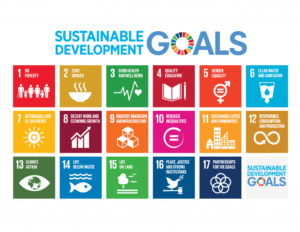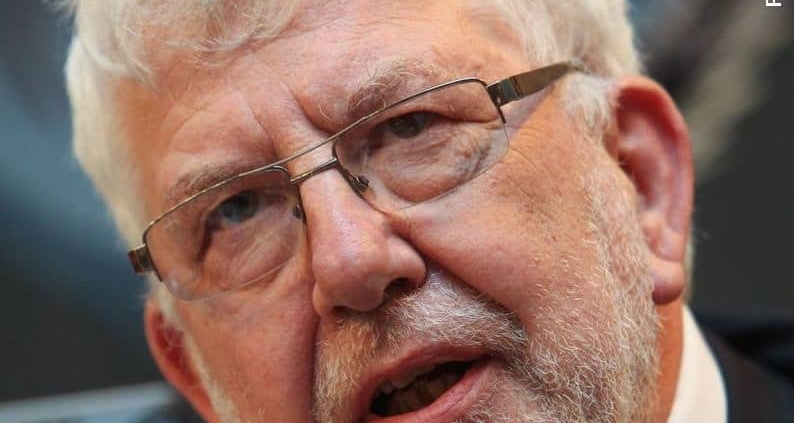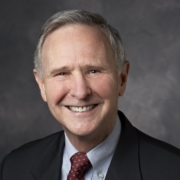
(un.org)
Is there a worldwide learning crisis today? My guest, Keith Lewin, argues that the real issue in much of international education development has to do with financing.
In our conversation, we discuss aid to education and the ways in which the Sustainable Development Goals don’t take the idea of sustainability seriously.
Keith Lewin is an Emeritus Professor of International Education and Development at the University of Sussex
Citation: Lewin, Keith, interview with Will Brehm, FreshEd, 138, podcast audio, December 3, 2018. https://www.freshedpodcast.com/keithlewin/
Transcript, Translation, & Resources:
Will Brehm 1:44
Keith Lewin, welcome to FreshEd,
Keith Lewin 1:46
Thank you. I am pleased to be here.
Will Brehm 1:48
You have written a lot about financing to education. And we actually hear a lot about the financing gap -that there’s a lack of money in or for education, globally speaking. What does that even mean? The financing gap in education?
Keith Lewin 2:05
It means a lot of different things to different people. Clearly development is a time-bound process: the faster you try and do it, the more resources you will need in a given moment in time. And when people talk about the financing gap in education, they usually mean that they’ve done some sort of calculation looking at what would be necessary in order to finance the achievement of the SDGs, in particular SDG 4, which is the one on education. What would be necessary for that, and what the current allocation of government budgets and the percent of GDP is to education. And whether the two balance or indeed one is greater than the other. If you do that, for example, across the African countries, sub-Saharan African countries, you’ll find that a reasonable definition of what SDG 4 would require in terms of new school places, buildings, teachers, and all the rest of it -African countries would need to spend about 6.5% of GDP on their education systems. In fact, at the moment, the average is closer to 4%.
Will Brehm 3:10
So, for African countries, they would have to increase the spending on education by something like 2.4% of GDP to get up to that that idea.
Keith Lewin 3:20
Yes. The low-income countries average a bit less, and the low middle-income countries average a bit more in terms of the proportion of GDP they currently spend.
Will Brehm 3:32
And what about in other parts of the world. What does this financing gap even look like?
Keith Lewin 3:39
The calculation is pretty much the same in terms of proportion of GDP. If you have the demography -that is the number of children relative to the number of adults- that poor and low middle-income countries in Africa have. Because the big drivers in these things are the number of children relative to adults, and the proportion of GDP you collect in tax, which allows you to finance your government. So, the story on that is really quite easy to understand. In a rich country, like the UK, we collect about 40 to 45% of our GDP in revenue which we can use to finance government services, 45%. A typical low-income country is collecting about 15%, that is one third as much relatively speaking. And the problem is, a big problem is, that they will have probably twice as many children per adult, maybe even three times. And its adults that pay taxes, that generates the wealth that creates the money to pay the government, which then can pay the teachers to teach the children. So, there is a problem. It is partly demographic and structural but it’s particularly a problem that cannot really be solved by aid. This is the critical point of which we find ourselves.
Will Brehm 4:56
So, before we turn to aid and really think about how aid is contributing, or not, to this financing gap, I want to just clarify. So, you said 45% of GDP is…
Keith Lewin 5:07
…being collected in revenue. Tax of one kind or another and indeed, that would include aid in a country that was receiving aid.
Will Brehm 5:20
Okay. And so, the amount of tax that is collected in a country like the UK pays for all of the government services?
Keith Lewin 5:28
It is much easier for a rich country, which collects 45% of GDP in tax to pay for public services, universal schooling, and the rest of it, than it is for a poor country which only collects 15%. I mean, this is simple arithmetic. The problem is that the country which is only collecting 15% cannot, tomorrow, double its tax rate, because that would not produce twice as much money. But if it does not increase the revenue collection, it will never actually be able to afford premise and resources to school all the children and meet SDG 4. And therein lies the problem. The problem is that if that gap is filled with aid, aid does not provide recurrent financing. Aid is unreliable. You may get a lot of money this year, and no money next year.
Will Brehm 6:16
So, what is what is recurrent financing? For those listeners who might not know that terminology.
Keith Lewin 6:20
A simple distinction is between recurrent and capital expenditure. Capital expenditure is things that last a long time: building buildings, building schools that last for 50 years would be regarded in those systems as capital expenditure. Paying teachers, on the other hand, you have to do every year, every month, continuously. And therefore, you must generate a revenue stream continuously. The problem with aid is it comes in chunks, and it is not necessarily reliable. So, if you are a friend of the United States one year, you may not be so much of a friend the following year, and they may cut your aid. The same with the British, and Danes, and Swedes, or any other agency. We see varying appetites to give aid to education overtime. So, it cannot and should not be used for recurrent financing. It creates dependency if you do that.
Will Brehm 7:11
And is aid being used for recurrent financing? I mean, I understand that it causes dependency but is that actually happening?
Keith Lewin 7:17
Yes, it must be. It may not be directly, but it must be indirectly. So low income and low middle-income countries appear to spend about 4% of GDP on education as I said. In actual fact, if you look at the proportion of GDP they raise in revenue from their own resources, it’s much less than that. They cannot afford to do that. They are only doing that because a proportion of that 4% is being provided from external finance in the poorest countries. There are about a third of the countries we think in the low-income bracket are receiving a third of their government budget in total from external financing. Now, if you receive a third of the total money to run your government, pay your civil service and do these other things, clearly, you’re in a worrisome position if the person or people in the agencies that are financing that change their mind about whether you’re a suitable person to grant all their money to. So, the really worrying thing about this is that there are probably 20 to 25 countries that have been in that position for 25 years. And so, if that is true -to the extent that is true- it means that the external financing has not generated endogenous development which can finance itself. It is done the opposite. It is prolonged dependence. And that is a challenge. And that is a challenge which is created by these financing gaps. Because if you fill them with aid, then you almost by definition must be generating dependence. Or you will be unless the aid is a very small proportion of the total resource. This is not, and I repeat this one, this is not to say that aid is something we shouldn’t do but we should do it in a carefully considered way within limits that does not increase unsustainable debt and generates independence and the politics of real accountability between the people and those who are governed. The people who pay the tax and the people who spend it. The real politics is not between the country and some external donor, it is between the people and their own government.
Will Brehm 9:29
It seems quite ironic to think that the SDGs are trying -the sustainable development goals on SDG 4- is trying to, in part, trying to fill this financing gap. And yet through the very process of aid in some cases, as you have just said, it is actually creating dependency because the aid is being used to fund recurrent expenditures in an unsustainable way. And so, seems like that is a great irony of the SDGs.
Keith Lewin 10:03
It is a paradox that by doing something which seems desirable in the short term, you may be making it more difficult in the longer term to sustain the result that you value. And surely, it’s fundamental to the idea of sustainable development goals that when you set yourself a target, and you achieve that target, you do not find five years later that you go back in the position you were at the beginning and you have to achieve the target again. That is the risk which is being run here. Some of the projections of the size of the gap are astronomic. My own estimates, and we have done this several times would come up with a figure I think I was saying about 15 billion a year additional needed in low income countries, and perhaps 25 billion in the middle-income countries. So that is 40 billion a year needed. Remember, the total volume of aid to basic education alone is probably about 6 billion a year. The replenishment of the GPE –
Will Brehm 11:05
The Global Partnership for Education
Keith Lewin 11:07
-produced, if my memory’s correct, about 2.3 billion over three years, which is about 800 million a year. So, these numbers are much smaller than the capital we have been talking about. Now there are other people who are talking about filling that gap with new innovatory forms of finance as they refer to it. But if they did that, and they produced 10 billion a year on a recurrent basis, this is an enormous amount of money relative to the size of the economies it is being poured into. And it does not answer the question, “Well, what would happen in 2019, 2020, 2021, 2022?” You would have to do this every year, or you would have to fire the teachers that you just employed. And the problem is recurrent finance because frankly, building enough schools to house all the kids in the world is very imaginable if you see it as a 10-year project using external resources, which are grants and don’t generate debt, where you give them money. But if you start applying that to the teacher equations, and the teacher salary equation, it can never work, it will never work. The only way that can be financed is to use aid and trade policy to generate the probability of fiscal states. A fiscal state is a state which can finance itself and its public services from its own revenues. This does not stop it from borrowing. But it does mean that it cannot be borrowing several times its GDP in order to finance itself because it will go bankrupt and it will default, and we will have to have HIPC again.
Will Brehm 12:41
Have what again?
Keith Lewin 12:42
Debt relief.
Will Brehm 12:44
So, are aid agencies trying to help some of these low income and middle-income countries that have such a large financing gap in education? I am sure there’s other issues in in social services as well. Are aid agencies trying to help these countries create better tax systems? Create a way in which they can generate the revenue domestically to fund the recurrent expenditures?
Keith Lewin 13:12
I think we see the beginning of that realization, but it is long overdue. The so called “learning crisis” is really a financing crisis. And the reason why every kid’s not going to school, of course, is partly political about fragile states, and so on but at the end of the day, in all, but the short term it is about the ability of states to finance public services. That means that states have to have viable economies, they have to grow, and in particular, people have to pay tax. We think that 20 people in Africa have assets in excess of $100 billion. We do not believe that most of them pay a proportionate share of tax. Indeed, we have some empirical studies now, which illustrate that it is people in the middle of the income distribution in Africa that paying most tax and people who are the richest and the poorest are paying the least. This clearly is not helpful from the point of view of public accounts and financing public services. There is another story about corporate taxation, tax holidays, and the incentives that companies are given. There is another story about corruption. We think that probably more than $50 billion a year simply goes missing and is stolen across Africa, which is much larger than the numbers we just have been talking about. We are also very aware that there is grounds for cautious optimism. Tax collection ratios are improving. 10 years ago, there were probably only two or three fiscal states in Africa that could raise revenue sufficient to cover their public services. Now, we think that that number is heading up towards double figures. It is being helped by digitization of cross-border transactions at ports so that you can check whose paid duty and who has not. It is being helped by the introduction of tax identification numbers which means that you cannot do business with government or indeed anybody else unless you identify yourself as a taxpayer in a particular country. And you certainly cannot do cross border transactions with significant amounts of money without being a known person. And we now have the ability to use wealth orders, which require people who have extraordinary wealth to demonstrate where it came from and that it’s acquired legally -and if it has then no problem.
Will Brehm 15:29
So, in these countries that are exhibiting some cautiously optimistic improvements to their tax system, do we see the education financing gap in those countries shrinking?
Keith Lewin 15:43
Too many countries to have one answer to your question. But yes, in some of them, absolutely. The opportunity is there. And there are some countries which have clearly made considerable progress and are pushing up to 20 or more than 20% of GDP in revenue collection. At the same time, if there are countries which have demographic transition, they will have fewer children per taxpaying adult, and therefore the ability to invest more per child. This is very much part of the story globally because most countries now do have low population growth rate and that makes it much easier to reach the SDG 4 type goals. But unfortunately, in most of sub-Saharan Africa demographic transition may not actually happen probably until 2050. There are differences in between the countries but there will be a lot of young people for the next 20 years in Africa who require opportunities to go to school. One very interesting thing is that Philip Coombs wrote a book called ‘The World Education Crisis’ in 1968. He did an analysis of the proportion of GDP that was allocated to education in poor countries. He came up with a number which I seem to recall from memory was 3.8%. For a similar data set currently, that number is still 3.8, 3.9, 4%. There is something about the demography and the politics and the governance of poor countries which seems to create that result, which has been very resistant to change. Since Jomtien, since Dakar, since all the studies that I and others have done on financing over the last 30 years, where the numbers tell the same story, but the political will to change the underlying reality -that they’re not spending enough money and not collecting enough money- hasn’t really shifted. The dial has not really shifted. That is the challenge now. There is an opportunity and it is absolutely related to the idea of sustainable development; we do not see that knocking through yet into financing. The financing, which is on offer, much of it, to me I am afraid does not appear to be driven by criteria on sustainability. It is driven by the old criteria of, we have a problem, we have not got enough money, how can we fix it? Let’s shovel some money into this particular problem without thinking. Well, what happens the morning after, when you wake up? And you spend the grant? Or you have got to repay the loan? The loan ratios in the countries that need the most assistance are pushing up against the limits of creating another round of indebtedness and default. And that should worry us all because it is clearly the opposite of sustainability.
Will Brehm 18:23
The aid agencies that you have looked at, and that are contributing to this financing gap in education. Are there any agencies that you think are doing a better job than others? That stand out as they are sort of on the forefront of this new thinking of financing and taxation and recurrent expenditures?
Keith Lewin 18:46
I did not suggest that the aid agencies were creating the gap. The gap is created by the political economy of resource allocation in low income countries and the politics of how much tax you collect and what you spend it on. So just a random example: I mean, there are countries which are heavily aided, and we have spent three times as much on their military as they do on their children. And therefore, they are investing in soldiers rather than the education of their children. And it may not be obvious why they are doing it if they are not fighting a major civil war, or cross border war. So, we have to be aware that governments make choices and they’re sometimes not choices we would necessarily agree with. But we should reflect that in how we can use aid to accelerate development. It is clearly pointless to give more aid to a country who chooses to use the resources not for the purpose it was intended for. And sometimes it is quite difficult to figure that one out. The best solution is to work towards a situation where the country has the real politics of representation. People pay tax, they call their government to account for their public services. And if they have not got enough of them, they have to either agree to pay more tax or indeed forgo the services. So that surely should be the aim. Whether some agencies are better at doing these things than others, I think is a question that requires “Type Two” thinking in economists’ terms. And that is -it is an analytic question which could be answered but to answer it real time off the top of my head is not something I am bound to do.
Will Brehm 20:27
I mean, one example that I can think of, maybe not good practice, but bad practice, based on what you are saying is some of what the World Bank does. They put out this report called the ‘Doing Business Report’. And they have an indicator – so they measure they rank countries based on the ease of doing business in these different countries. And one of the indicators they have is paying taxes. And countries actually receive lower scores if they collect all sorts of taxes. So, countries are actually, in a sense, nudged in the direction of cutting taxes. Getting rid of certain different tax schemes, they might have developed on property, or dividends, or financial transactions, or income taxes. So, to me, that sort of goes against a lot of what you were saying, and why would the World Bank do that? It seems like they are going against the very idea of sustainability.
Keith Lewin 21:30
I think you probably said it in one. I mean, I am not answering on behalf of the Bank but clearly there is a tension. I don’t know if the policy advocacy you’re talking about applies to the United States as well as to a poor country in Central Africa but the reason I mention that is because clearly something like the amount of tax that you raise in revenue, it’s not a linear thing. Neither can you say less is best or more is best, neither is true. Somewhere in the middle is about the right amount, depending on your demography, the amount of tax your taxpayers are willing to bear, what their preferences are in terms of how it should be spent. So, it is not more is better or less is better. It is look at each as a case by case basis. See what the need is, in that kind of terminology, see what the gap is, and see what could be necessary for this thing to work. Remember, also, that a line behind this equation is growth in the economy. If you have real growth in the economy, even with the same proportion of government budget and the same proportion of GDP, you’ll have more resources to school your children and pay your teachers because you had real growth. Now if low tax creates real growth that’s great but if low tax creates either no growth or people exporting the revenue that they generate, the money they make, well that is not going to be helpful either. It is a more complicated thing that I think that can be simply put. It is just the macroeconomics of development and growth and the responsible government that generate sufficient resources to provide public goods. And public goods are essential and at the center of equitable development.
Will Brehm 23:17
And do you think the Sustainable Development Goals as a framework capture that idea?
Keith Lewin 23:24
No.
Will Brehm 23:26
Why not?
Keith Lewin 23:27
I am not sure if it’s a fair expectation of the SDGs to do that. But you will have to remember that the SDGs as currently formulated or a list not a recipe. They are not a strategy that can be converted into a theory of change. Indeed, I would challenge some of those people who work around the SDGs to make explicit what their theory of change is, and I mean theory of economic and developmental change, not planning a project and implementing it. That is a challenge because if it really is more than simply a list of things which are pretty self-evidently desirable, it somehow puts them together into a strategy where the parts are linked together and can synergize with each other. I do not think we have anything like that. What we have is a lot of contradictions. You just pointed out one: if you think that low tax is the way to grow, you have to answer the question how low tax is kind of generate more revenue for public services? It will only be true if you have a lot of growth, you might have the opposite. In terms of distribution and equity, the SDGs aren’t really very clear about what they’re prepared to pay for equity, because growth itself may be unequal and a higher rate of growth may have to be traded off against more equity and rights-based approaches to development. But I think the biggest criticism of the three years on from the SDGs is to answer the question: how is what we are doing different to what it was before 2015? And whether we are talking about coal fired power stations, and PM 2.5 particulates in capital cities, whether we are talking about the planning of school systems to minimize the traffic of parents driving their children to school. What is it we are talking about? We could be talking about a lot of things. But what we should be seeing is clear differences in terms of the kind of projects that we finance, the ways in which we use aid to accelerate development in a way which doesn’t mean the day after we finished the project we have to do it again because we haven’t ensured a sustainable outcome. And that we are conspicuously looking again at what we do in terms of valuing the future over the present. The way in which Western capitalism works and indeed projects are planned, and businesses operate is not to do that. It is to do the opposite. It is to assume that there is a discount rate on the future, which means that in the future, things will be cheaper. Well, we should act the other way. Clean air and national parks, fish in the sea, zebras on the savanna are all going to be more expensive in the future. We have got to cost them that way, otherwise they will not be there.
Will Brehm 26:12
Is the political economy of capitalism capable of doing that?
Keith Lewin 26:16
I hope so. Capitalism has been responsible for an unprecedented amount of development which has improved the lives of many people in many parts of the world. Which of course, is not to say that for some it has not done exactly the opposite. But in the current dispensation of things, globally, I think, the safest conclusion to reach is that we still have the problem of how to manage capitalism in a way which does indeed generate growth and improve living standards for everybody. And at the same time, does it in a way which is a fairer role than more unfair, and which distributes wealth across the world rather than concentrates it in a few places. Nine people in the world appear to own assets that are worth more than 4 billion people on the planet. This by anybody’s standards, sounds ridiculous, is ridiculous, and cannot really be necessary for the future of the planet. Surely, we can make a better set of arrangements that do not concentrate so much power among so few people in such an apparently unfair way.
Will Brehm 27:18
Well, Keith Lewin, thank you so much for joining FreshEd today.
Keith Lewin 27:22
Thank you very much.
Education’s Financing Crisis










